Abstract
Key pecking of pigeons was reinforced with food in the presence of a horizontal line and never reinforced in the presence of a vertical line. Highly stereotyped behaviors, as well as key pecking, were observed and recorded in the presence of both stimuli. Results showed that a high proportion of time spent in the presence of the horizontal line was occupied by key pecking, a high proportion of time in the presence of the vertical line was occupied by stereotyped nonkey-pecking behaviors, and intermediate proportions of time spent in the presence of intermediate stimuli were occupied by each class of behavior during generalization tests. Similar running rates (number of key pecks divided by observed key-pecking time) were obtained in the presence of all stimuli, indicating that changes in time rather than tempo accounted for the changes in overall rates of key pecking. An exception occurred in responding to the horizontal line as differential performance was developing. In addition to an increase in time spent key pecking, increased running rates occurred in seven of eight birds, suggesting that both time allocation and tempo play a role in behavioral contrast of overall rates of key pecking.
Keywords: discrimination, generalization, behavioral contrast, timeout, interim activities, time allocation, key peck, pigeons
Full text
PDF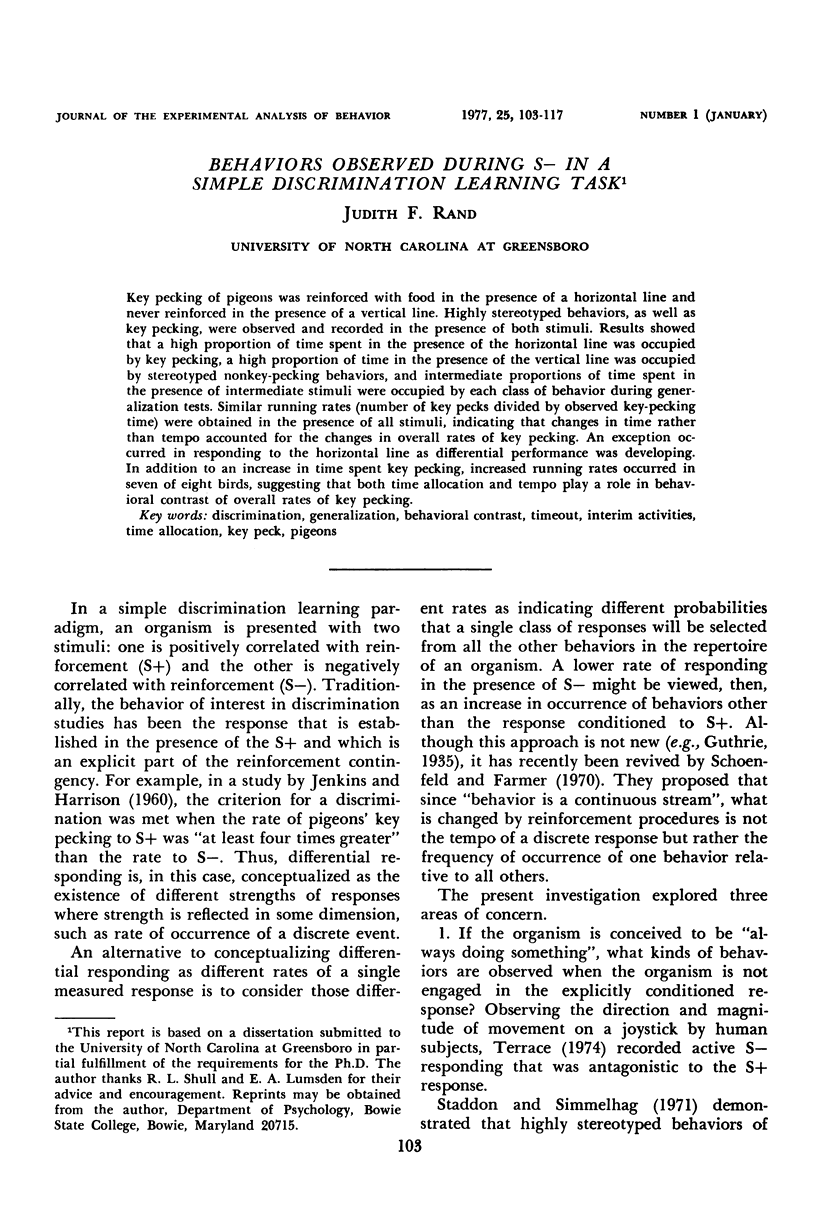
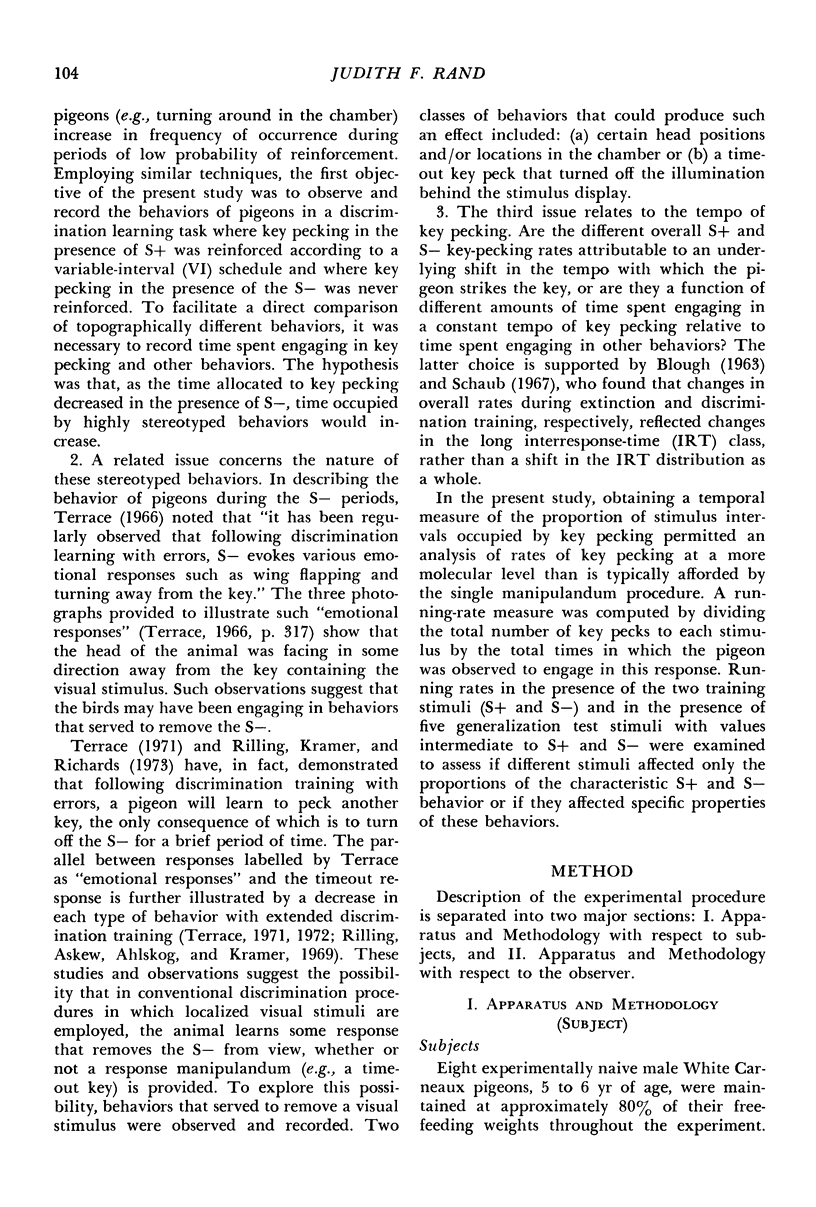
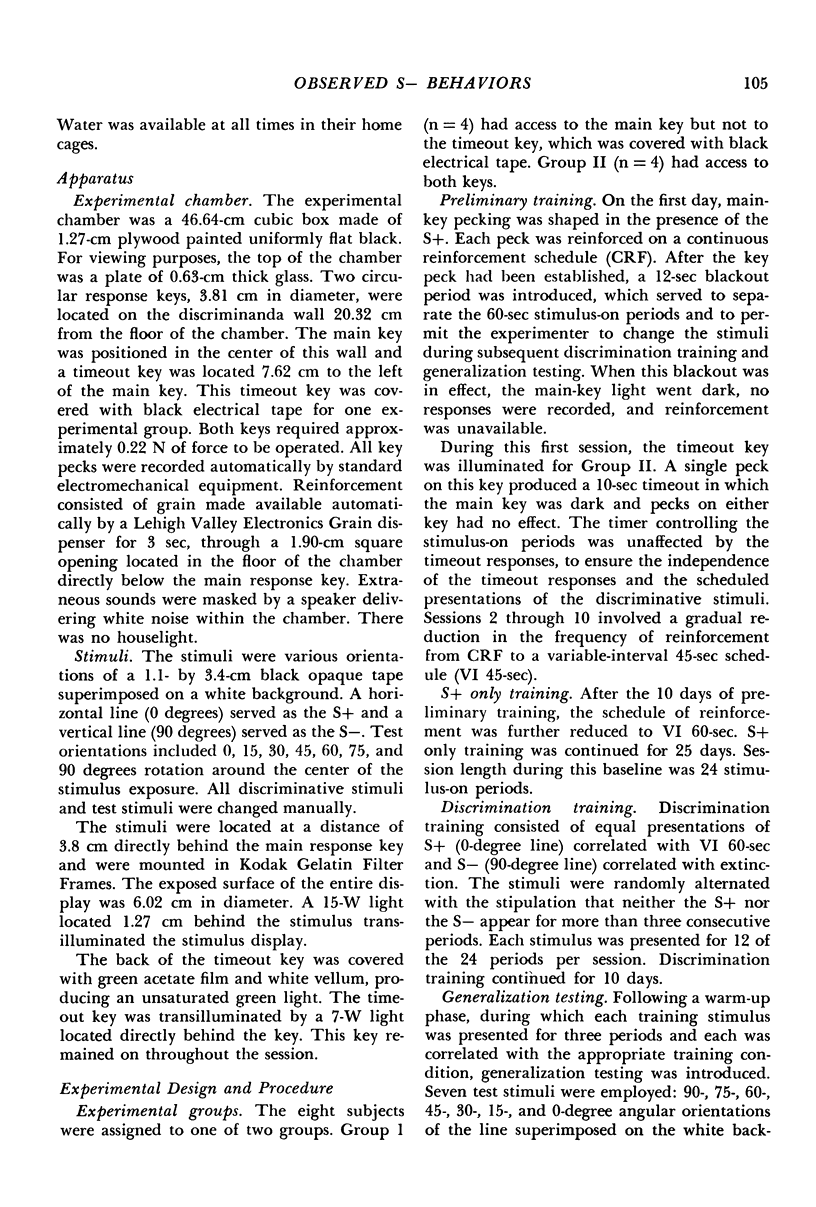
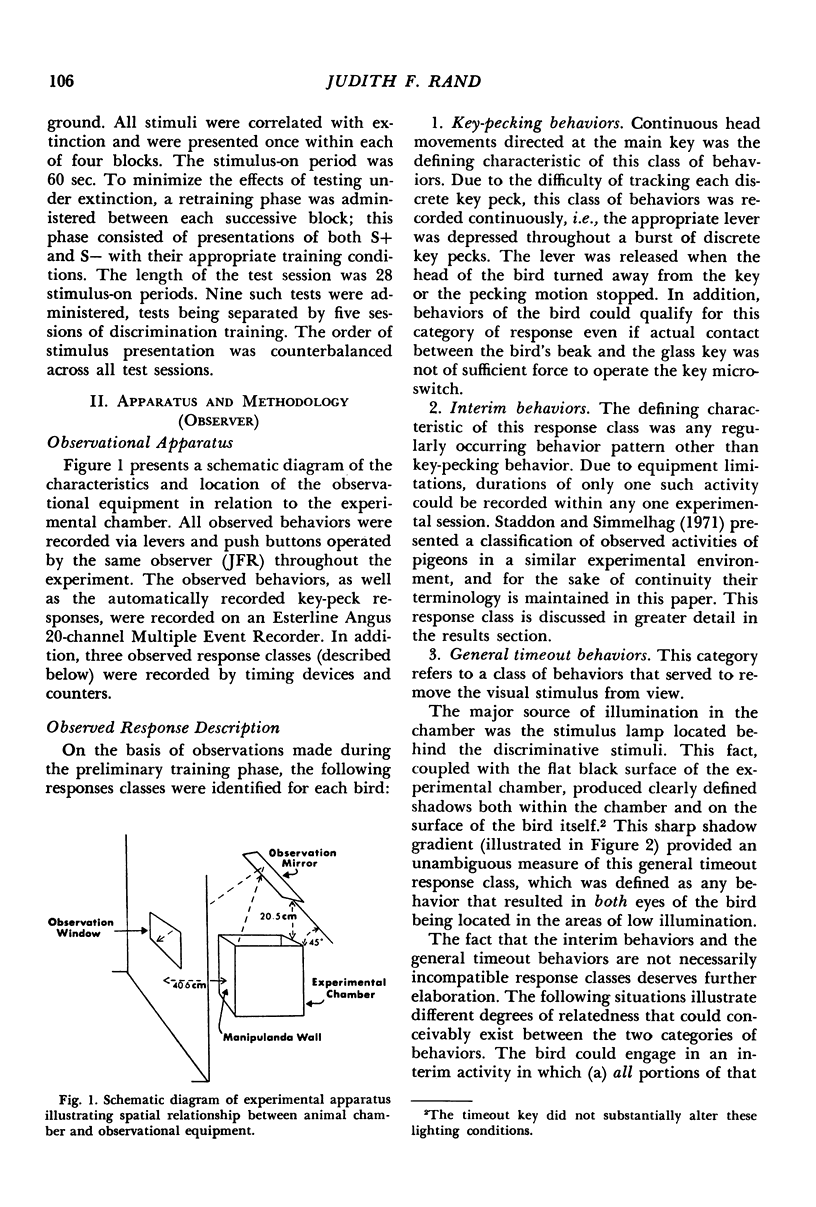
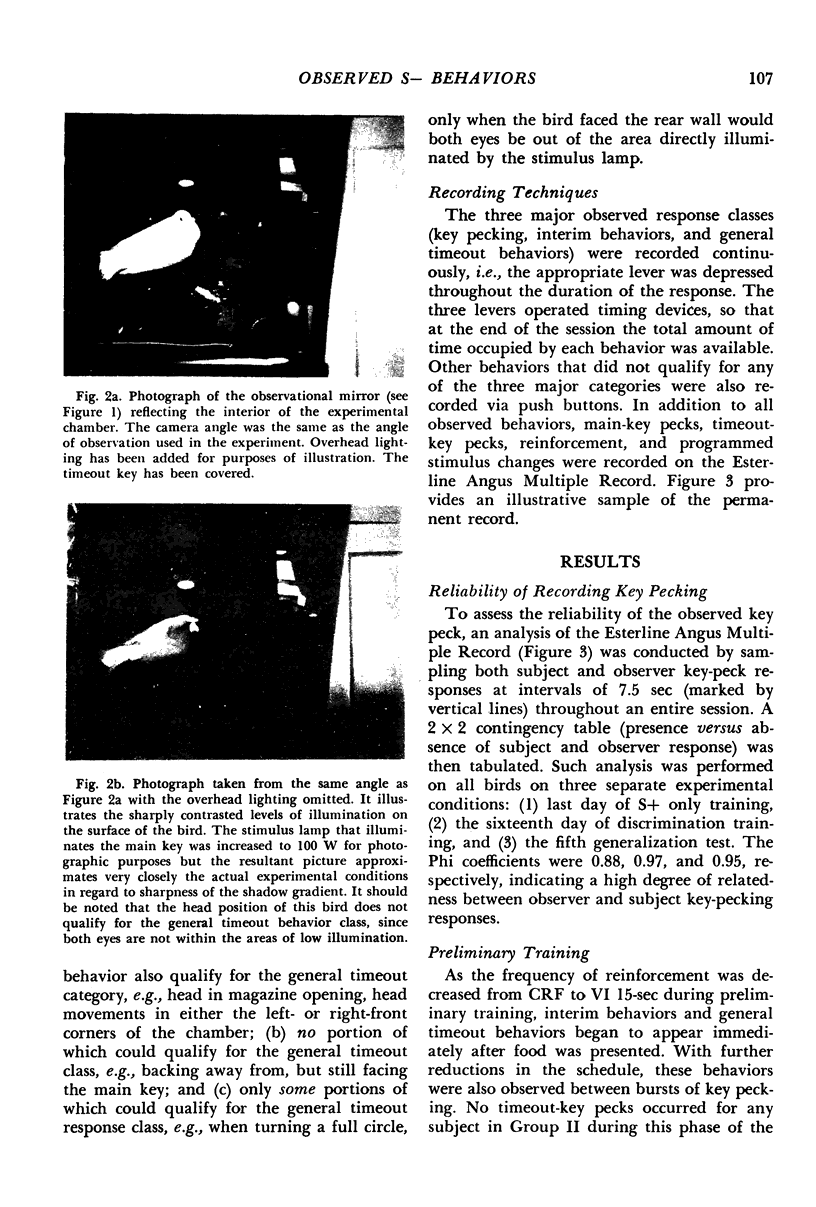
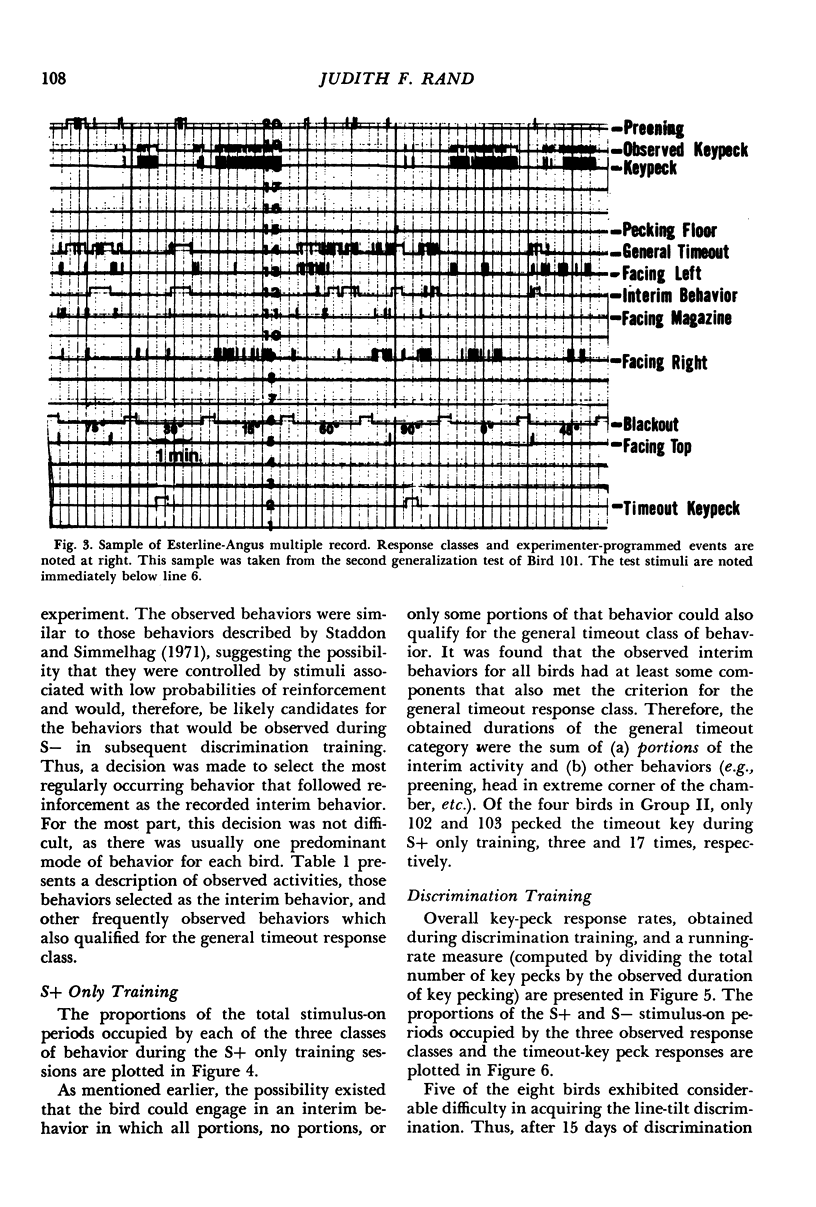
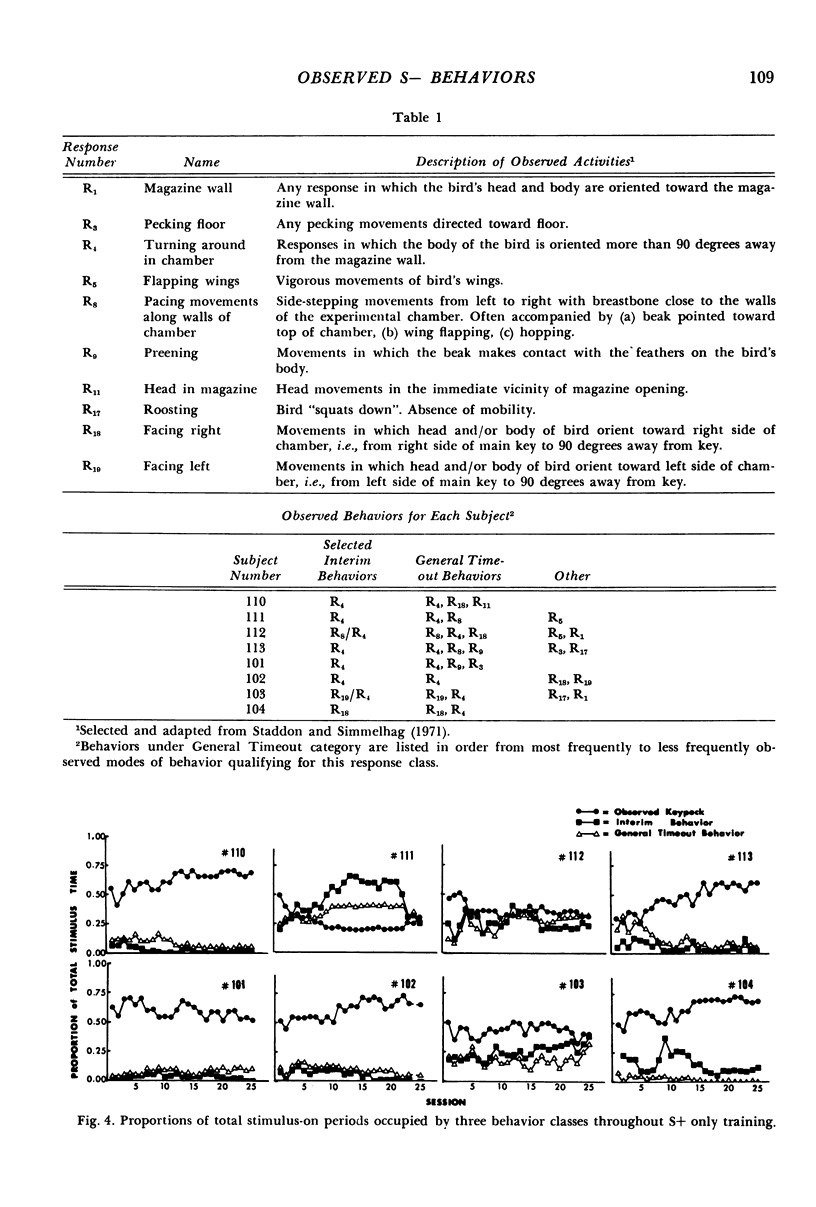
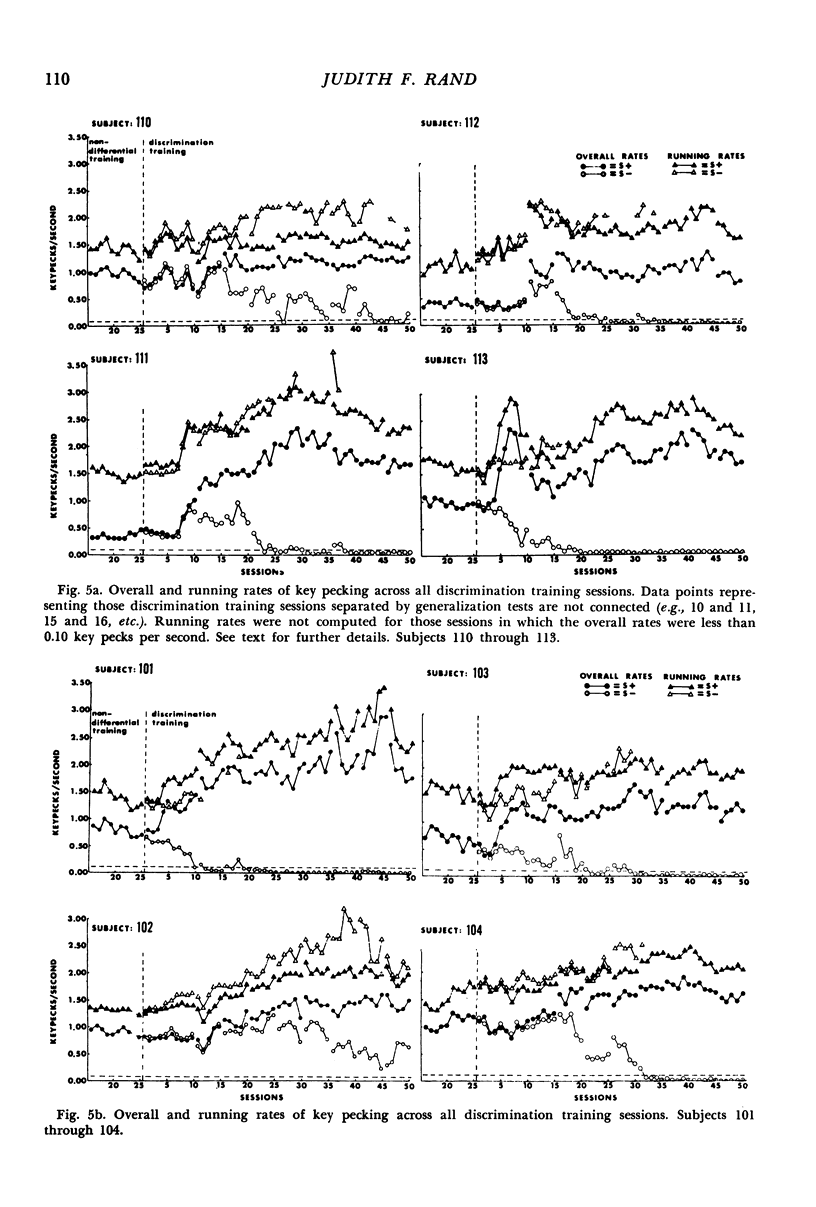
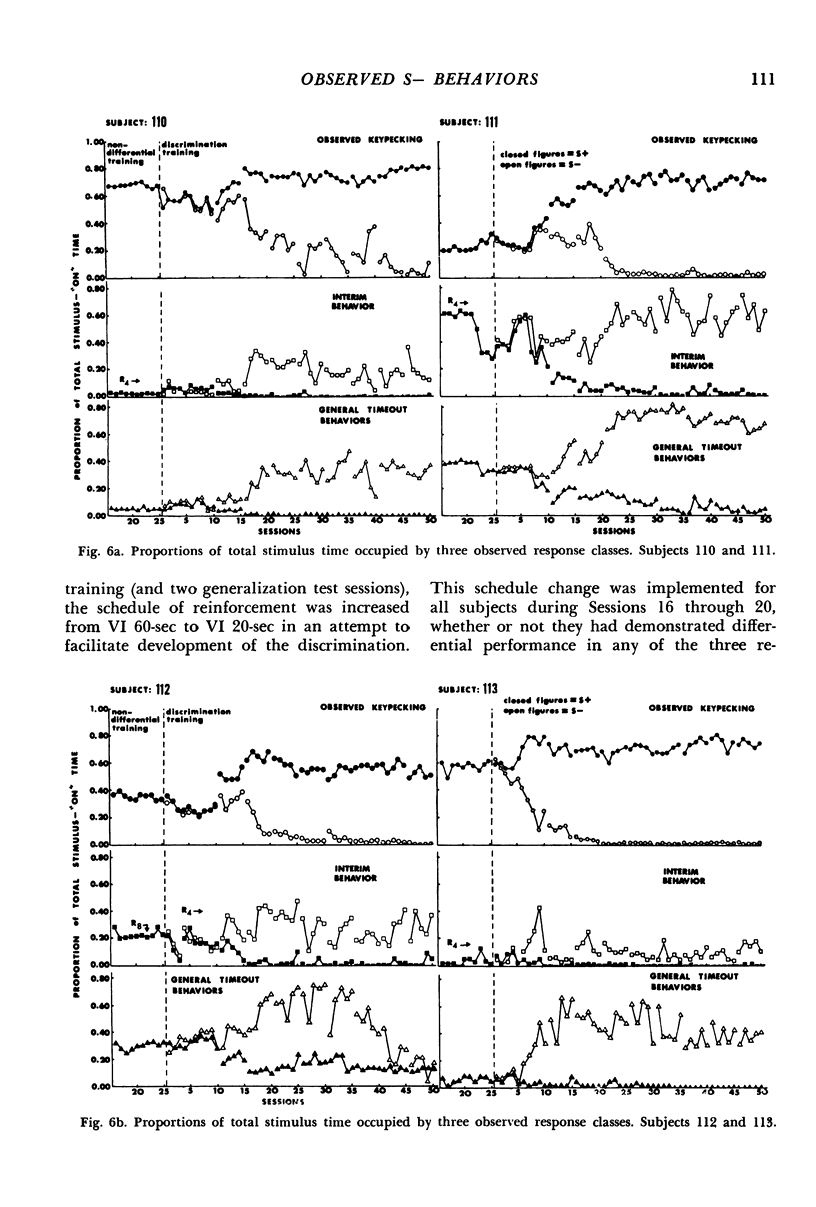
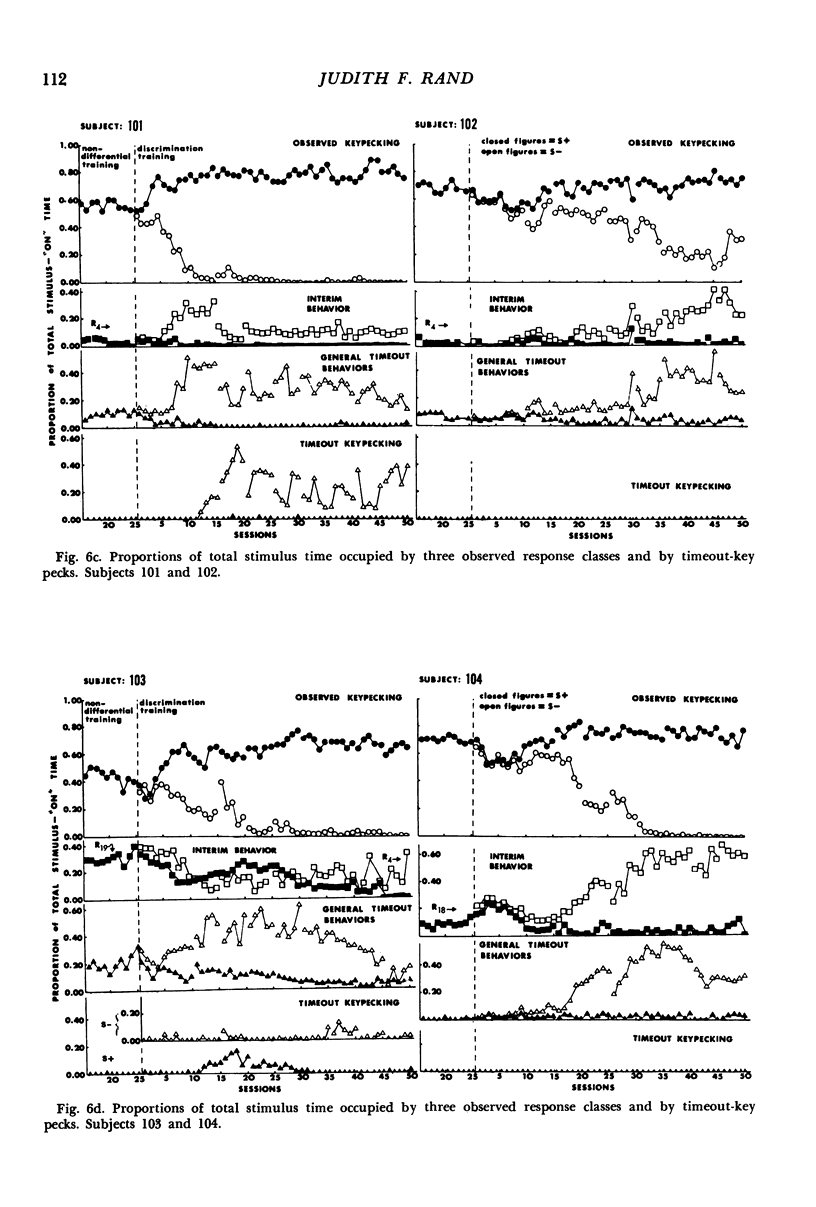
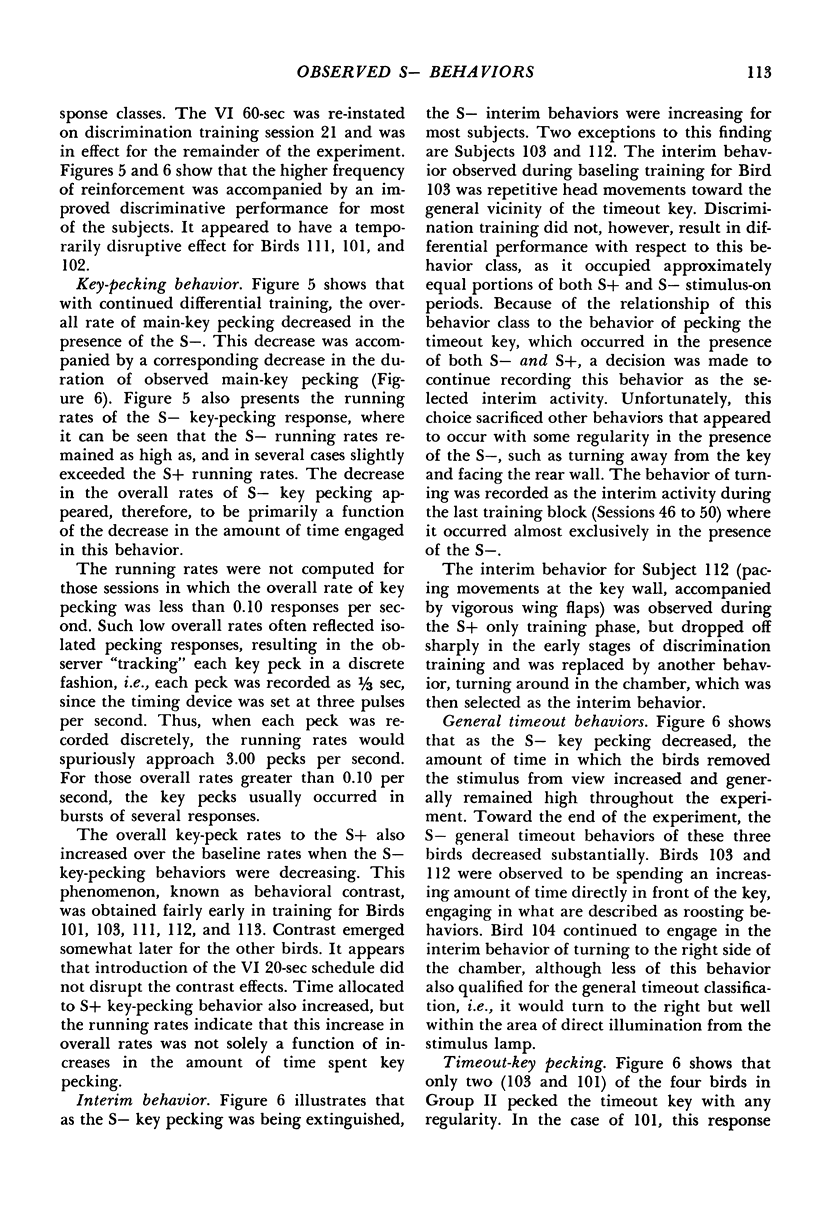
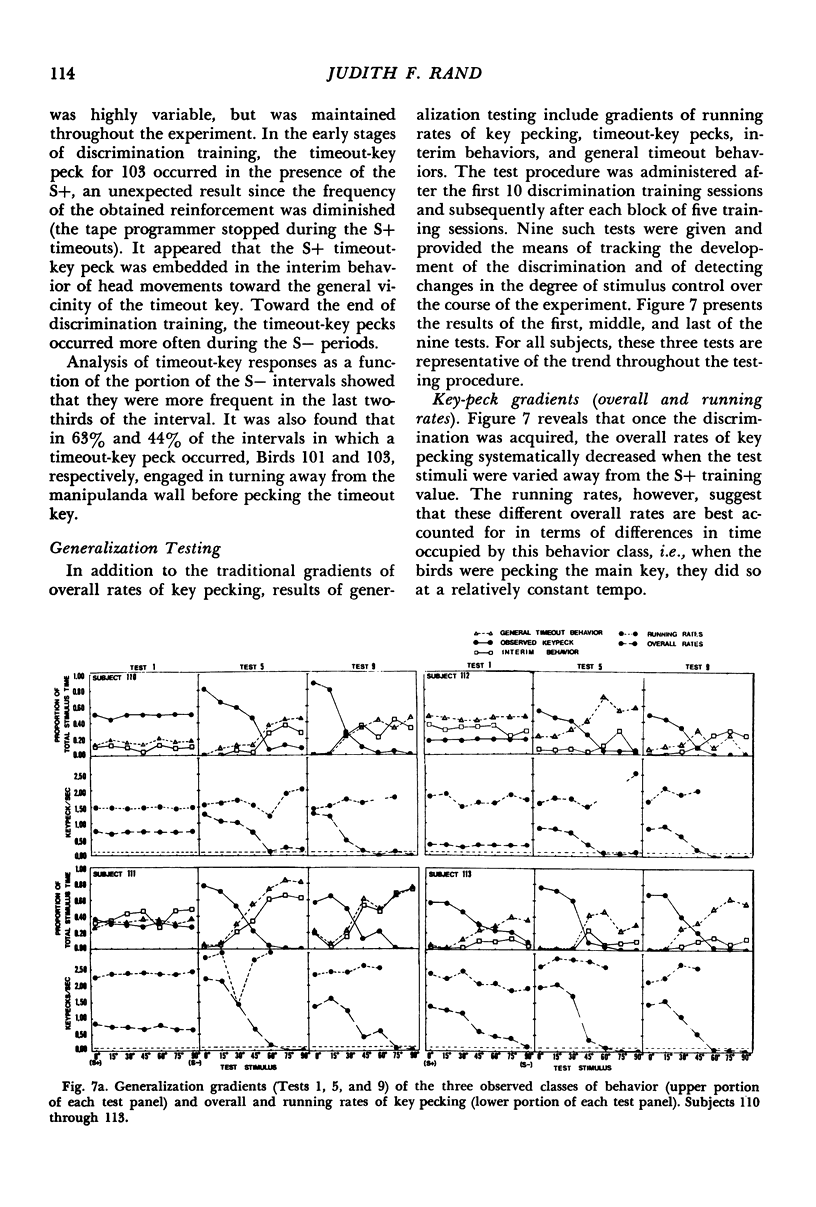
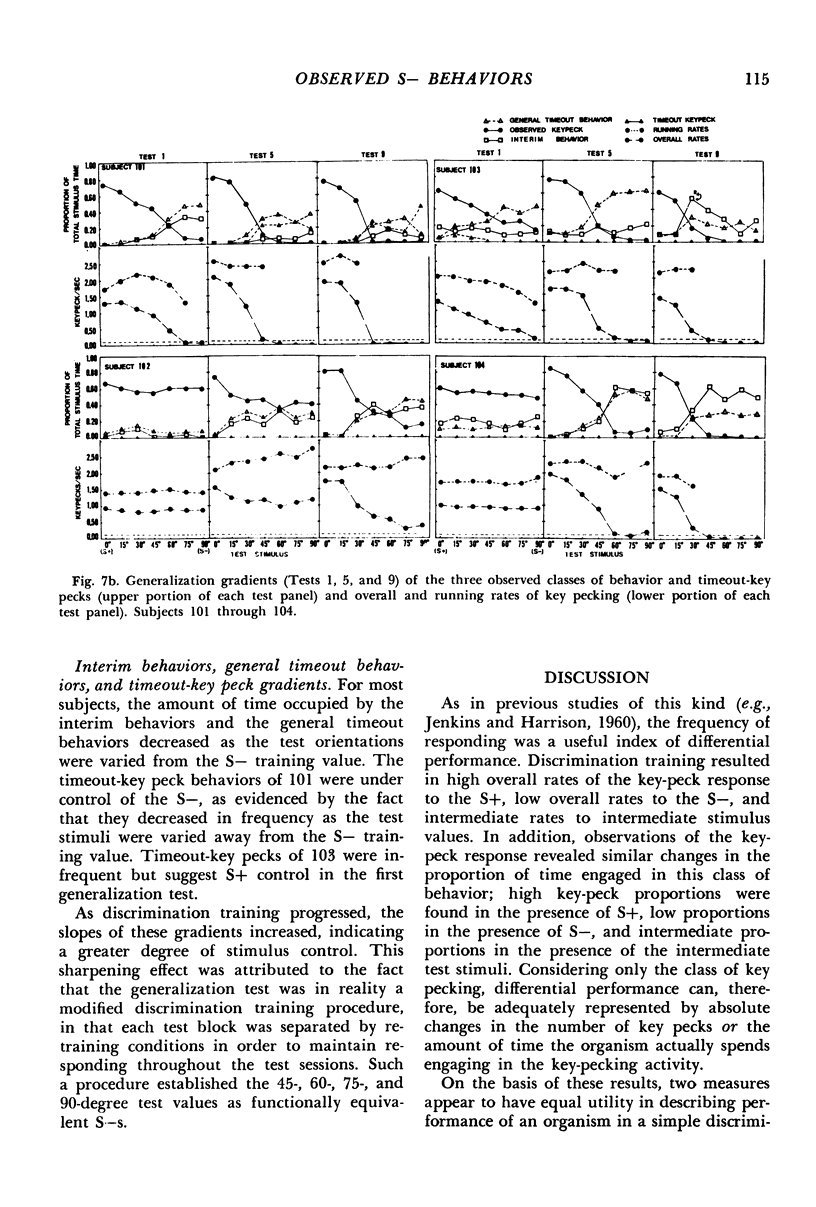
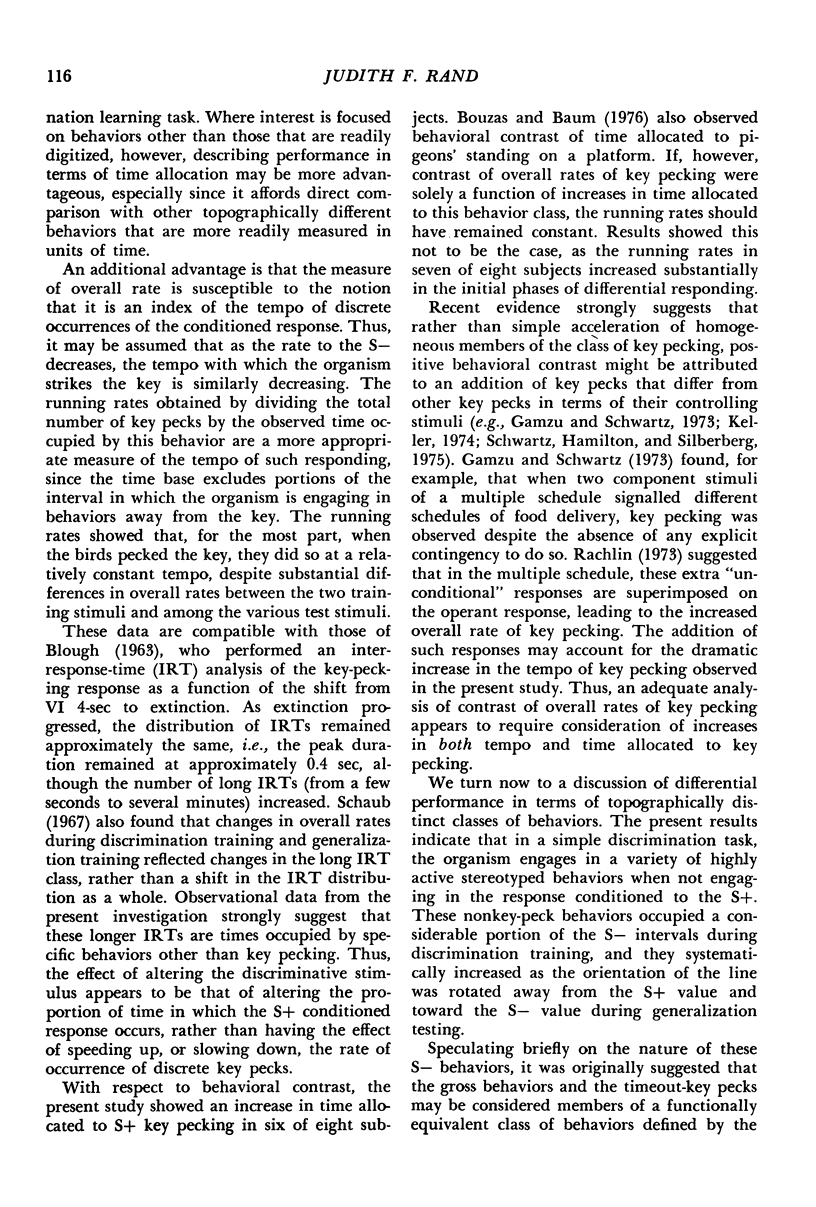
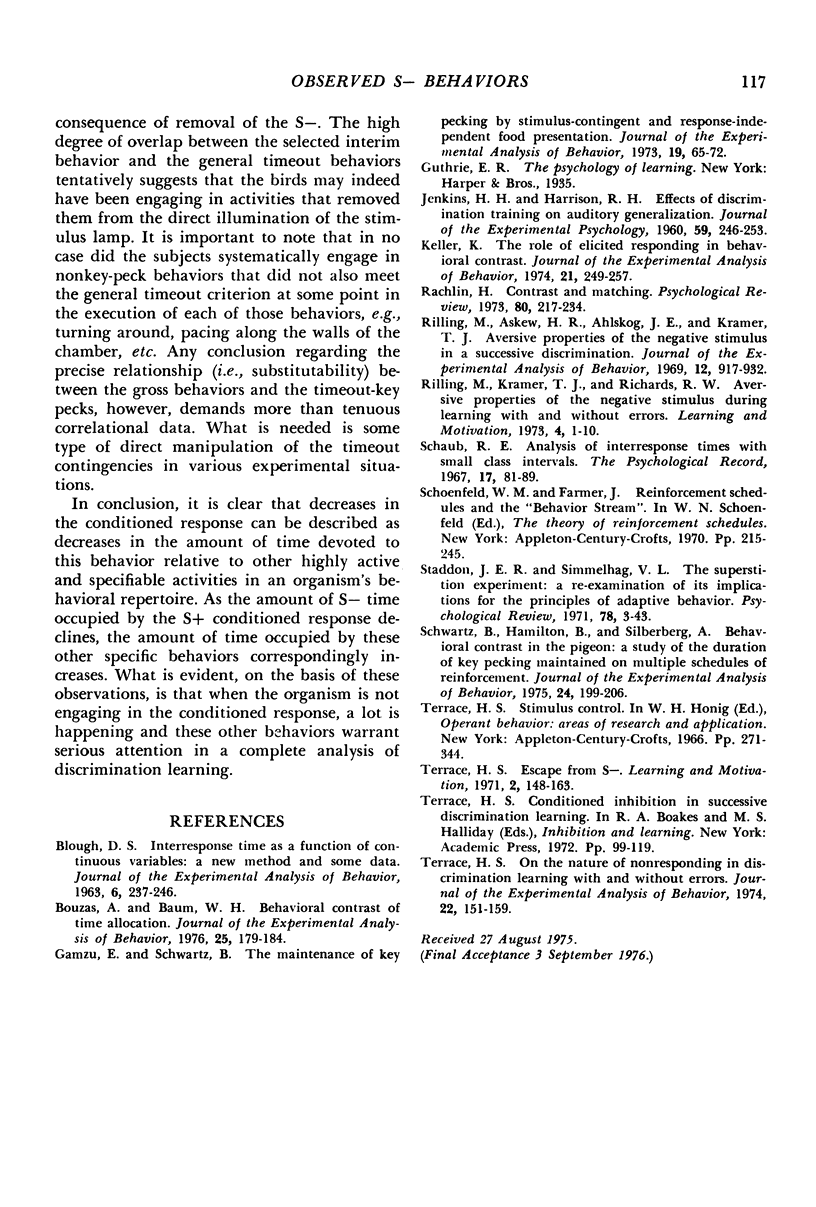
Images in this article
Selected References
These references are in PubMed. This may not be the complete list of references from this article.
- Blough D. S. Interresponse time as a function of continuous variables: a new method and some data. J Exp Anal Behav. 1963 Apr;6(2):237–246. doi: 10.1901/jeab.1963.6-237. [DOI] [PMC free article] [PubMed] [Google Scholar]
- Bouzas A., Baum W. M. Behavioral contrast of time allocation. J Exp Anal Behav. 1976 Mar;25(2):179–184. doi: 10.1901/jeab.1976.25-179. [DOI] [PMC free article] [PubMed] [Google Scholar]
- Gamzu E., Schwartz B. The maintenance of key pecking by stimulus-contingent and response-independent food presentation. J Exp Anal Behav. 1973 Jan;19(1):65–72. doi: 10.1901/jeab.1973.19-65. [DOI] [PMC free article] [PubMed] [Google Scholar]
- JENKINS H. M., HARRISON R. H. Effect of discrimination training on auditory generalization. J Exp Psychol. 1960 Apr;59:246–253. doi: 10.1037/h0041661. [DOI] [PubMed] [Google Scholar]
- Keller K. The role of elicited responding in behavioral contrast. J Exp Anal Behav. 1974 Mar;21(2):249–257. doi: 10.1901/jeab.1974.21-249. [DOI] [PMC free article] [PubMed] [Google Scholar]
- Rilling M., Askew H. R., Ahlskog J. E., Kramer T. J. Aversive properties of the negative stimulus in a successive discrimination. J Exp Anal Behav. 1969 Nov;12(6):917–932. doi: 10.1901/jeab.1969.12-917. [DOI] [PMC free article] [PubMed] [Google Scholar]
- Schwartz B., Hamilton B., Silberberg A. Behavioral contrast in the pigeon: a study of the duration of key pecking maintained on multiple schedules of reinforcement. J Exp Anal Behav. 1975 Sep;24(2):199–206. doi: 10.1901/jeab.1975.24-199. [DOI] [PMC free article] [PubMed] [Google Scholar]
- Terrace H. S. On the nature of non-responding in discrimination learning with and without errors. J Exp Anal Behav. 1974 Jul;22(1):151–159. doi: 10.1901/jeab.1974.22-151. [DOI] [PMC free article] [PubMed] [Google Scholar]




